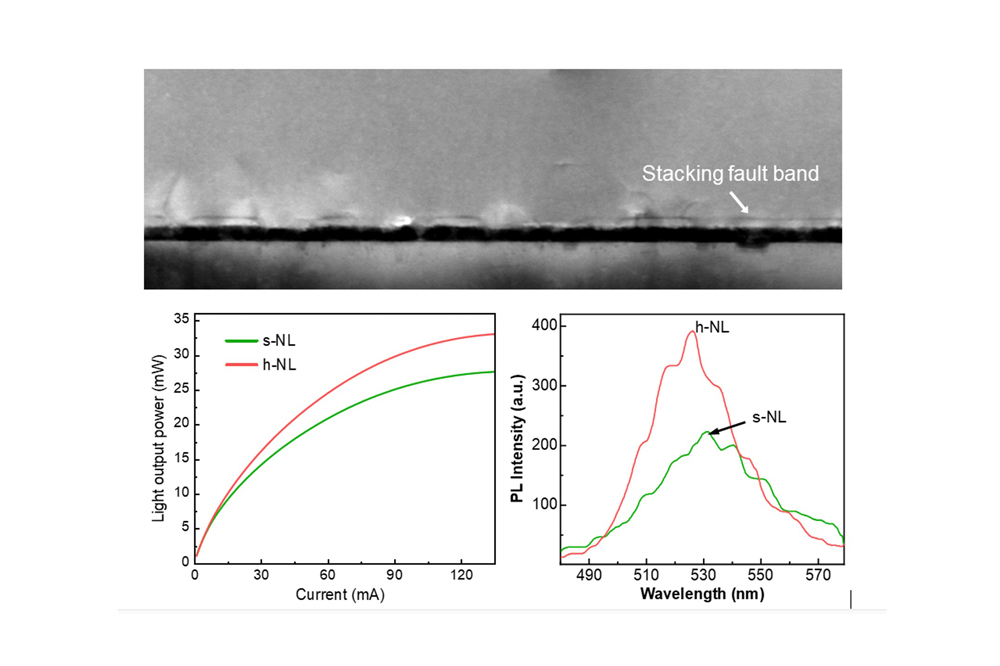Scientists Develop efficient GaN-based green LEDs

WHU team boost quantum efficiency using hybrid nucleation layer
A research team led by Shengjun Zhou at Wuhan University has reported developing efficient GaN-based green LEDs on sapphire substrate. They proposed a hybrid nucleation layer consisting of sputtered AlN and mid-temperature GaN components to boost quantum efficiency of GaN-based green LEDs.
The team says the hybrid nucleation layer provides a promising approach for the pursuit of efficient III-nitride emitters in the green-to-amber region.
Currently, the development of efficient III-nitride emitters in the full visible range is very attractive. The integration of multicolour III-nitride emitters can enable efficient and precise management of the mixing spectra to realize high-resolution displays and various smart lighting applications. However, owing to the poor efficiency of III-nitride emitters in the green-to-amber region, these promising applications have been largely delayed.
The researchers have fabricated high-efficiency InGaN/GaN green LEDs on sapphire substrate by using the novel hybrid nucleation layer. A stacking fault band structure was generated at the interface of hybrid nucleation layer and GaN, which facilitated the misfit stress compensation. Benefiting from the early misfit stress relaxation, they achieved reduced dislocation density and residual stress in the green LEDs. An efficiency improvement of ~16 percent was demonstrated in the mass production by using the hybrid nucleation layer. This gain is attributed to the increased localisation depth and spatial overlapping of the electron and hole wave functions.
‘Toward efficient long-wavelength III-nitride emitters using a hybrid nucleation layer’ by Bin Tang et al, Optics Express, 29(17), 2021


































